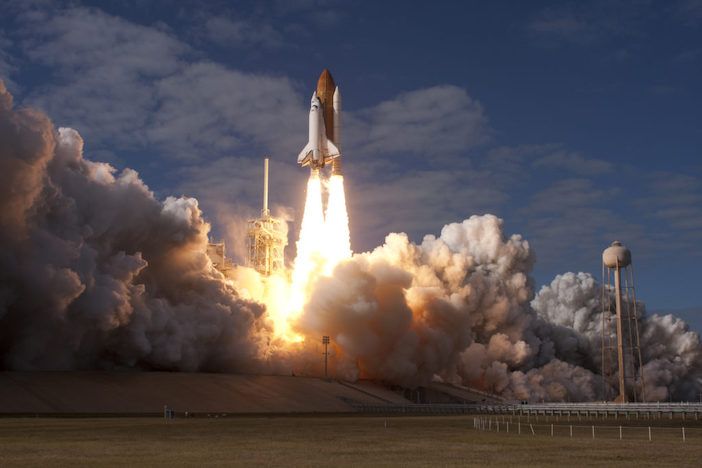Researchers have used a system for monitoring nuclear tests to track the infrasound from 1,001 rocket launches and have been able to distinguish different rockets at different stages of flight.
After their initial blast, rockets create rumbles in infrasound, soundwaves too low to be heard by human ears that can travel thousands of miles.
The research could be used to find problems and identify the atmospheric re-entry or splashdown locations of rocket stages, according to the study published in Geophysical Research Letters.
To listen in on rocket launches, the authors used a global monitoring network originally installed to detect nuclear blasts called the International Monitoring System (IMS). The IMS is a series of stations around the world equipped with micro barometers capable of detecting infrasound.
The stations also gather the infrasonic sounds released by other large explosions such as volcanic eruptions or space rocket launches.
The research identified the distinctive sounds from seven different types of rockets around the world, including the Space Shuttles, Falcon 9 rockets, various Soyuz rockets, the European Space Agency’s Ariane 5, Russian Protons and several types of Chinese Long March rockets.
In some cases, like the Space Shuttle and the Falcon 9, the researchers were also able to identify the various stages of the rockets’ journey.
Infrasound represents acoustic soundwaves below the general threshold of frequency that humans can hear. But while higher frequency noises are louder close to the source of things like nuclear explosions, low-frequency infrasound travels longer distances. Infrasound is produced by natural events as well as technological sources, and has been used to detect remote volcanic eruptions or the hum of the ocean swell.
The researchers examined 7,637 infrasound signatures recorded at IMS stations from 2009 to mid-2020, a period that included 1,001 rocket launches. The team only examined rocket launches that occurred up to 5,000km from an IMS station, but found the acoustic signals from rocket launches could sometimes be detected up to 9,000 kilometers away, according to author Patrick Hupe, a researcher at the German Federal Institute for Geosciences and Natural Resources.
The researchers found infrasonic signatures for up to 73% of these rockets, or 733. The other 27% of launches they couldn’t detect because the rockets had smaller thrusts or the atmospheric conditions didn’t favor the propagation over long distances.
Space Shuttle vs Falcon 9
When two different rocket – the Space Shuttle and the Falcon 9 were closely compared it was found the infrasonic signals of different stages of flight for these rockets could be distinguished.
For the first, a Space Shuttle launched from Kennedy Space Center in November 2009, the research team detected the infrasound created by the splash down of the fuel boosters.
They also examined the launch and descent of SpaceX’s Falcon 9 rocket, which has a partially reusable rocket that reentered the atmosphere and landed successfully on a drone ship in the ocean in January 2020. Hupe’s team could detect both the takeoff of the rocket and the landing of the first booster.
“By processing the data and also applying different quality criteria to the infrasonic signatures we were able to separate different rocket stages,” Hupe said.
“The ability to detect different types of rockets could be helpful,” said Adrian Peter, a professor of computer engineering and sciences at the Florida Institute of Technology who has studied the infrasonic signatures of rockets before.
According to Peter, the characterization of different stages of rocket launches could be useful for determining future problems such as when a rocket fails to launch properly. Analysis of the infrasonic signature may provide clues of what went wrong, especially when the information is correlated with sensor readings from the rockets themselves.





